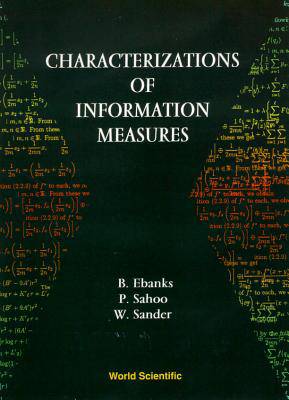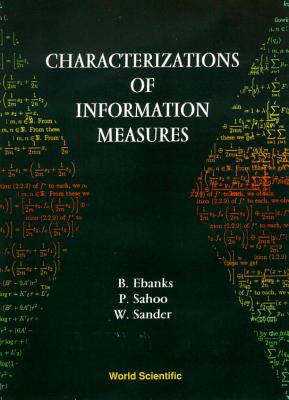
Door een staking bij bpost kan je online bestelling op dit moment iets langer onderweg zijn dan voorzien. Dringend iets nodig? Onze winkels ontvangen jou met open armen!
- Afhalen na 1 uur in een winkel met voorraad
- Gratis thuislevering in België vanaf € 30
- Ruim aanbod met 7 miljoen producten
Door een staking bij bpost kan je online bestelling op dit moment iets langer onderweg zijn dan voorzien. Dringend iets nodig? Onze winkels ontvangen jou met open armen!
- Afhalen na 1 uur in een winkel met voorraad
- Gratis thuislevering in België vanaf € 30
- Ruim aanbod met 7 miljoen producten
Zoeken
Characterization of Information Measures
Bruce Ebanks, Prasanna K Sahoo, Wolfgang Sander
Hardcover | Engels
€ 162,95
+ 325 punten
Omschrijving
How should information be measured? That is the motivating question for this book. The concept of information has become so pervasive that people regularly refer to the present era as the Information Age. Information takes many forms: oral, written, visual, electronic, mechanical, electromagnetic, etc. Many recent inventions deal with the storage, transmission, and retrieval of information. From a mathematical point of view, the most basic problem for the field of information theory is how to measure information. In this book we consider the question: What are the most desirable properties for a measure of information to possess? These properties are then used to determine explicitly the most "natural" (i.e. the most useful and appropriate) forms for measures of information.This important and timely book presents a theory which is now essentially complete. The first book of its kind since 1975, it will bring the reader up to the current state of knowledge in this field.
Specificaties
Betrokkenen
- Auteur(s):
- Uitgeverij:
Inhoud
- Aantal bladzijden:
- 292
- Taal:
- Engels
Eigenschappen
- Productcode (EAN):
- 9789810230067
- Verschijningsdatum:
- 14/04/1998
- Uitvoering:
- Hardcover
- Formaat:
- Genaaid
- Afmetingen:
- 162 mm x 226 mm
- Gewicht:
- 540 g

Alleen bij Standaard Boekhandel
+ 325 punten op je klantenkaart van Standaard Boekhandel
Beoordelingen
We publiceren alleen reviews die voldoen aan de voorwaarden voor reviews. Bekijk onze voorwaarden voor reviews.











